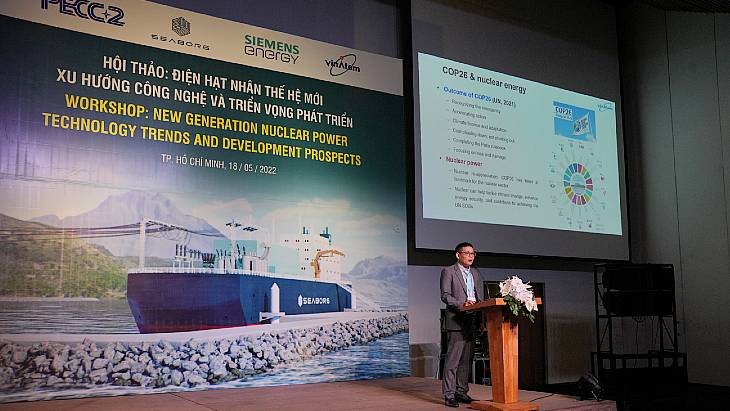What are Seaborg’s CMSR power barges?
Seaborg’s design is for modular CMSR power barges that can produce between 200 MW and 800 MW of electricity, with an operational life of 24 years. Instead of having solid fuel rods that need constant cooling, the CMSR’s fuel is mixed in a liquid salt that acts as a coolant, which means that it will simply shut down and solidify in case of emergency. It signed a Memorandum of Understanding with Samsung Heavy Industries in April to manufacture the barges.
What is Vietnam’s current position on nuclear power?
Vietnam has considered establishing nuclear power generation since 1995, with firm proposals in 2006. Russia and Japan had both agreed with Vietnam to finance and build nuclear power plants, but plans were cancelled in 2016 "due to economic conditions in our country today" and lower demand projections, with an expansion of gas and coal instead. However in March this year the Ministry of Industry and Trade issued a draft development plan calling for the inclusion of small modular reactors in the country’s energy mix after 2030.
Last week at the 15th National Assembly, deputies voted on a resolution against construction of the Ninh Thuan nuclear power plant. However broadcaster CNA cited a government statement on the event as saying Minister of Industry and Trade Nguyen Hong Dien told the event "developing nuclear power is an on-going inevitable trend in the world" and, according to Vietnam+ the country’s permanent representative at the International Atomic Engery Agency, Nguyen Trung Kien, speaking at the regular meeting of its board of governors this week "shared common interests in the potential of new technologies such as small modular reactors, transportable nuclear power plant, and floating nuclear power plant".
Conference held to discuss next generation
The three companies hosted a conference on new generation nuclear power trends in Vietnam in May along with the Vietnam Atomic Energy Institute (VinAtom).
One of the areas covered was the COP26 and Vietnam’s green energy proposal. Speaking after the event, PECC2 said that "the development of nuclear energy in Vietnam" is a decision to be taken at the highest level, but the aim was to carry out the research to help in "assessing, planning and delivering future strategies".
The report notes the 10% per year rise in demand for electricity in Vietnam and the country’s commitment to reduce its greenhouse gas emissions and also notes that hydrogen "is expected to play a key role in energy transition" and says "hydrogen demand from existing refinery and fertiliser sectors amounts to 429,000 tons per year".
It also says that it expects "demand for ammonia and methanol will increase in Vietnam" and for this study "it was agreed to study combined power and chemical production projects for annual production of 300,000 tonnes of ammonia and annual production of 300,000 tonnes of methanol".
A preliminary schedule of MFPP deployment, based on a scenario where MFPPs substitute for 50% of capacity from new coal projects planned for after 2030, suggest 4000 MW capacity to be put in place in Vietnam between 2031 and 2035, with 1500 MW from MFPPs in the north, 1400 MW in the south, 800 MW from MFPPs for islands and 300 MW from MFPPS in the central area.
For general site selection criteria the report focused on electricity grid demand and grid connection, compatibility with the planning policies "for utilising sea and land areas for different purposes" as well as compatibility with maritime routes and army or national security areas.
The report’s conclusion says the exercise had achieved its objectives and had identified potential sites while "an analysis of hydrogen development confirmed the potential of building large-scale hydrogen production, potentially enabling Vietnam to become an exporter of clean energy".





_66891.jpg)
_30199.jpg)
_72306.jpg)






